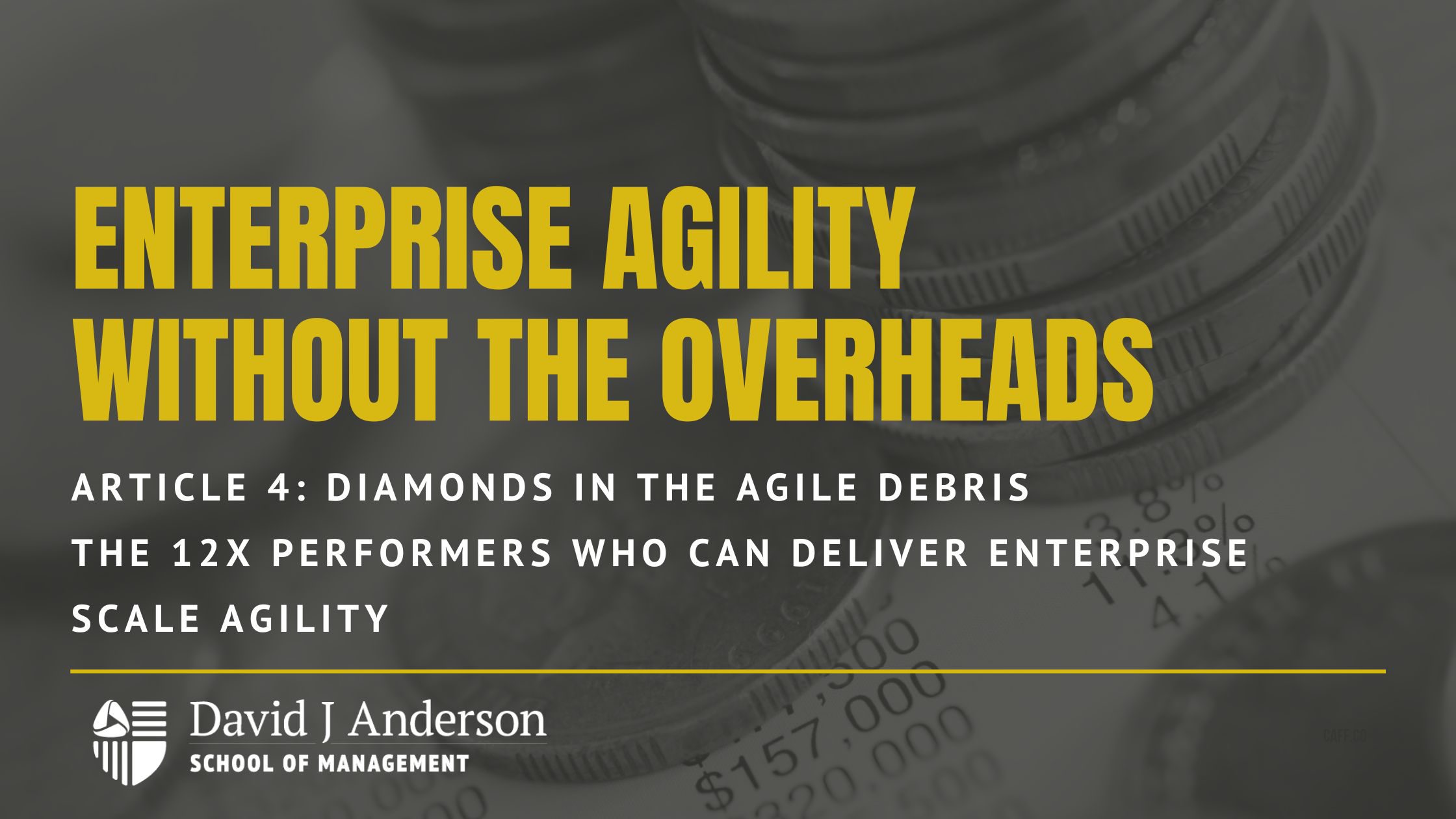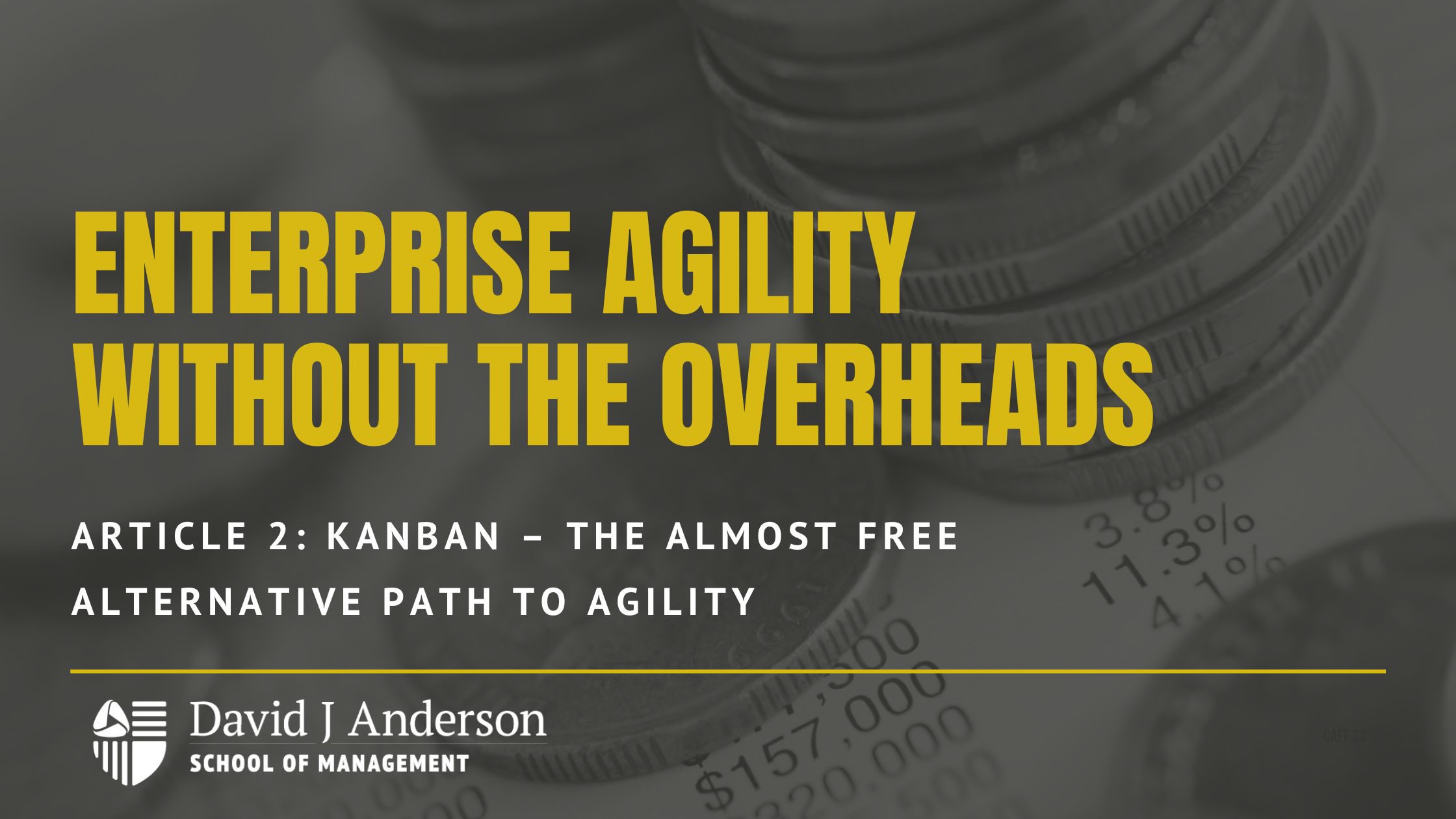Agile Has Been Costing You Too Much – What to do Instead
Recently, the Agile crisis arrived in the Iberian Peninsula as two large companies in Spain and Portugal, a bank and an oil company, laid off most of their Agile coaches. While Agile adoption was slow to start in the conservative culture of southern Europe, the ¨Agile is Dead¨ message appears to have spread quickly. Just 14 months after CapitalOne in the United States cut 1,100 Agile positions, Spanish companies are now following suit. We hear similar stories from Latin America and Brazil. It seems that companies worldwide have finally discovered that Agile has been costing too much! Although we have been advising this for at least 8 years already (Is Agile Costing You Too Much?), this is no time to gloat. Businesses need agility more than ever in the extremely turbulent times in which we are living. So, Agile was costing you too much and you decided to cut the overheads and usher your Agile coaches out the door. What next? Is it possible to achieve enterprise-scale agility without the additional costs? The short answer is yes, and we have been teaching how to do so for over 20 years.
The Gold Standard in enterprise-scale agility.
Today, the Gold Standard in enterprise-scale agility achieved using the Kanban Method is the recent experience reports from UniCred in Brazil. At a scale of 2,200 people in a single business unit, they improved their business agility over several years such that revenues increased by 70% in 2022. This is in a market where all their competitors were down 20-30%. Significantly, one of the business directors, in place of the typical technology delivery people, has been on the conference circuit talking about the benefits. Kanban and the use of our maturity model are being acknowledged as contributing directly to significant business results. Their results were achieved with only 4 additional staff: 1 Accredited Kanban Consultant (AKC) and 3 Kanban Coaching Professionals (KCPs). In addition, 11 existing managers received training and achieved the Kanban Management Professional (KMP) credential. With an increase of only 0.2% in staffing, revenues grew by 70%.
The simple truth is that enterprise agility should never have involved an army of coaches and a whole host of extra positions with unusual job titles such as Scrum Master, Release Train Engineer, or Product Owner. For a business to move with agility, this always required managers to modify their behavior and make better decisions, action-oriented decisions, decisions that prefer progress with imperfect information rather than delaying waiting for better information. Decisions that built and encouraged a high level of trust enabling transactions to happen without a lot of bureaucracy, and a preference for finishing work-in-progress, rather than starting something new, when existing work is blocked or delayed. The greatest leverage towards enterprise agility has always been the need to improve the quality of management decision-making. We´ve been focused on this challenge since the publication of Agile Management for Software Engineering in 2003. It has been 21 years of experience in educating managers on how to behave in a manner that enables enterprise-scale agility. 21 years while large businesses continued to waste time and money focusing on the wrong problem.
Agile has failed. What next?
So now more than ever, your business needs agility at the enterprise scale. You have discovered that the Agile movement has failed you. What to do next?
The results at UniCred are not a fluke. They are not a flash-in-the-pan or a one-off result that isn´t repeatable. In truth, UniCred is merely the latest in a long line of similar successes. In 2016, we reported results from CMB (China Merchant Bank) where they achieved significant results at a scale of 3,500+ people, using a total of 200+ training and consulting days and no new additional people. Meanwhile, in a side-by-side comparison of adopting Kanban in part of their organization and Scrum in another part, Scrum cost 150 times more to implement and failed to institutionalize while providing no meaningful improvements in business results. CMB was one of 5 large Chinese companies at that time that could show that Kanban cost less than 1% of implementing an Agile method and yet produced far greater results.
The first time we saw a business leader take the stage at one of our conferences was in the Autumn of 2009 in London when IPC Media presented their significant business results from adopting Kanban.
Tried, tested, and proven over 20 years.
Winding back the clock even further to 2005, the very first Kanban implementation at Microsoft increased productivity by over 200%, reduced delivery times by more than 90%, and improved on-time predictability from 0 to 98% without any additional cost. The manager who led the initiative was recognized with the award for the most meaningful process improvement in the IT division of the company for 2005 and was promoted to two levels soon afterward. Significantly, the improvements at Microsoft did not touch the business analysis, software development, or testing practices, the only changes were changes in management practices. From the very beginning, the Kanban Method has been providing enterprise agility without the overheads of Agile methods.
Tried, tested, and proven over 20 years, the Kanban Method has the guidance and credibility to enable your organization to achieve large-scale enterprise agility with confidence.
What does a typical Kanban initiative look like?
While UniCred appears to have pushed the performance limits, with only 4 additional people to coach 2,200 others, a typical implementation should involve very few extra staff.
We recommend:
- One AKC (Accredited Kanban Consultant) for each business unit (typically, an organization of 300-1,200 people) or product or service portfolio
- One KCP (Kanban Coaching Professional) for each product unit or initiative within the business unit (typically 150-300 people), or one for each major initiative in your portfolio
These coaches/consultants use a sports coaching approach and playbook (Kanban+ and the Kanban Maturity Model, KMM). Typically, they will attend management meetings and reviews to provide guidance and advice that gives confidence and credibility to decision-making.
- All managers, and those expected to be promoted to a managerial position within the next 18 months, should receive Kanban Management Professional (KMP) training (4 days), with some taking it further to Enterprise Kanban Management Professional (E-KMP) (an extra 2 days of training). Typically, 12-24 managers per training class.
Recommended Formation
If we imagine a business unit of 1,200 people divided into 8 product units of 150 people each with 5 service delivery/workflow/value-stream managers per unit plus a handful of managers of shared services and a product unit manager, perhaps 10-12 managers per unit in total, then 8 would receive KMP training and 2-4 E-KMP training. In Summary:
- 96 managers would receive KMP training and around 24 of them move on to E-KMP.This totals to 4 KMP classes and 1 E-KMP class, 5 training classes in total.
- 8 KCPs (each of whom will have received at least 11 days of training and use the vast collection of reference materials in books and online in the Kanban+ platform daily.
- 1 AKC – someone with years of experience as a KCP, who has in turn taken another 5 days of training, then written an essay, and been part of a professional cohort, sharing and learning together, eventually to be submitted to a panel interview before acceptance as an AKC – someone capable of leading large-scale enterprise agility initiatives.
Yes, you still need a coach; someone with credibility who can reassure your managers and give them the confidence to make the right decisions. Slowly, over time, your AKC and KCPs can become part-time, eventually reducing to perhaps 1 day per week, or appearing just once per month at an operations review.
The Expected Results
Total cost should be less than 0.5% of existing fixed costs.
Expected results*:
- Time to market should drop 50-95%
- Productivity should rise 4x up to 20x
- Predictability should improve dramatically in some cases close to 100% on-time
- Quality should improve dramatically with a dramatic drop in failure demand and rework
- Significant observable impact on business results, such as revenues up 70%
[* expected results are based on real observations of case studies and experience reports gathered over 15-20 years, from a wide range of industries, across 6 continents.]
While a positive difference should be observable within 6-12 weeks, it has often taken 2-4 years to achieve the full scope of what is possible.
In addition, when managers are doing their job and leading with the intent to improve agility, we would expect a significant cultural shift achieved through changed behavior and more congruent decision-making.
Appropriate instrumentation will be necessary. Tracking and reporting work and its flow together with flow-related metrics will be essential.
New feedback mechanisms such as operations review will be needed. Feedback mechanisms that enable enterprise-scale improvements and management of dependent effects across the vast network of services within your organization.
Is now the time for you to start your Kanban journey to true enterprise agility?
Contact us to get tailored recommendations for training for you and your organization. Discover our complete schedule of training courses designed to equip you with the tools needed to see similar results.
Enterprise Agility Without the Overheads
This is article three of our series Enterprise Agility Without the Overheads. Get caught up on article one and article two.





